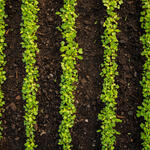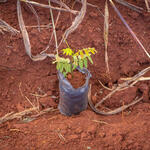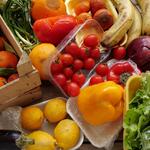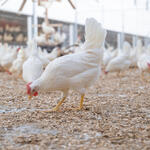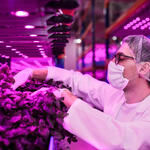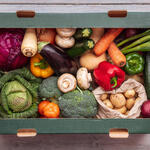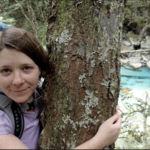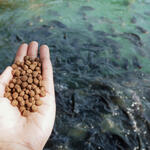- Date: 31 May 2023
- Author: Julia Kurnik, Senior Director of Innovation Startups, WWF Markets Institute
Hallie Shoffner, a sixth generation Arkansas farmer, knows that we need to change where, and how, we grow our food. She points to climate change as the biggest threat facing farmers, and therefore our food system, today.
Between drought, fire, heat, other extreme weather events, and labor struggles, hundreds of farms are closing or will close in California, which currently dominates production of fruits, vegetables, and nuts in this country. And it’s only going to get worse. In the next few decades, rising temperatures will make places like California’s Central Valley too hot to grow many of the fruits and vegetables that are cultivated there today, and increasingly erratic weather will make a volatile industry even more volatile.
- Date: 11 May 2023
- Author: Edward Wyatt
In Central Brazil’s vast Cerrado savanna, a grand experiment is taking place. Baru trees by the hundreds are being planted – some in the form of seeds, some as seedlings, and some well on their way to maturity in agroforests alongside other native vegetation. In some tracts, cattle graze among the more mature baru trees, in other areas, no cows are allowed.
The point of all this testing is to uncover the premium growing conditions under which the baru (Dipteryx alata) can thrive. The species, native to the Brazilian Cerrado, is a key part of reforestation efforts in the state of Mato Grosso do Sul. And overseeing a reforestation project on the Boa Vida farm near town of Bonito is a woman who is a “traditional seed guardian,” Elida Cristina Martins.
“I found that if we planted baru with bananas nearby it grows much faster than when planted alone, and the bananas help break the wind and keep the ground wet to keep the baru healthy,” she said as she gave a recent tour of her farm to a group of visitors from World Wildlife Fund (WWF) and the Tapestry Foundation.
- Date: 12 April 2023
- Author: Katherine Devine, Director of Business Case Development, WWF
ChatGPT has been all over the news for its ability to create well-written concepts with minimal prompting, leading many to herald a new era of artificial intelligence. But it’s not the only game in town in terms of innovative AI. WWF, in collaboration with the Pacific Coast Food Waste Commitment (PCFWC), Afresh, and Shelf Engine, conducted pilots using AI purchasing systems in two different grocery retail chains to reduce food waste and improve profits. The results were impressive: food waste was reduced by 14.8% per store on average.
- Date: 09 March 2023
- Author: Katherine Devine, WWF and Sandra Vijn, Kipster
WWF has written previously about turning food waste into animal feed, finding that 14.7 million tons in the US could be safely used for animal feed rather than go to landfills. A new WWF paper highlighting Netherlands-based egg company Kipster’s US expansion goes a step further, arguing that we should consider relabeling “food waste” to “surplus food.”
- Date: 16 February 2023
- Author: Katherine Devine and Emily Moberg, WWF Markets Institute
The news is full of headlines about companies making commitments to reduce their greenhouse gas (GHG) emissions. Given the alarming pace of climate change and governments’ failure to slow it, companies’ contributions are vital to both the planet and their bottom lines. Companies have a stake in mitigation efforts as climate change presents a real risk to their operations and infrastructure. However, behind all of the ambitious goalsetting and initial progress lies a secret that’s ripe for exploitation: product-level GHG accounting is so fragmented and flexible that it’s incredibly difficult to hold companies and sectors accountable for emissions reductions. What’s more, because companies can choose which methodologies to use and companies in adjacent industries may choose different methodologies (think: beef and leather), some emissions are simply not being accounted for once we get to the end products.
- Date: 24 January 2023
The Markets Institute @ WWF identifies global issues, trends, and tools around the most pressing challenges of our time. Each year we publish what we think were the biggest surprises of the previous year and release a list of what may be key emerging developments that will affect the global food system and will be important for producers, consumers, the private sector, and governments to consider as they anticipate issues and trends and respond more effectively and at speed and scale.
The lists are identified through research, interviews, data analysis, gleanings from others, and especially through discussions with the Markets Institute’s Thought Leader Group. As always, we welcome feedback and discussion, so please get in touch. We hope you are staying safe and as healthy as you can in 2023.
— Jason Clay, Executive Director, Markets Institute @ WWF
- Date: 14 December 2022
- Author: Julia Kurnik, Director, Innovation Startups, WWF Markets Institute
Food production is the largest human impact on the planet. It contributes to habitat conversion, greenhouse gas (GHG) emissions, soil degradation, agrochemical run-off, and inefficient water use. World Wildlife Fund (WWF) envisions a more distributed and resilient food system in which some food is produced at scale closer to consumers, with more efficient use of inputs, less waste, and a lower carbon footprint. Soilless indoor farming could help get us closer, especially if paired with energy and site innovations, community integration, and knowledge sharing. To that end, WWF embarked on a project to better understand the challenges of this growing industry and develop practical solutions.
- Date: 10 June 2022
- Author: Julia Kurnik, World Wildlife Fund
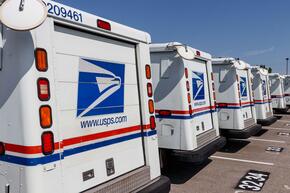
Our current food system is failing farmers, consumers, and the environment. Many farmers, especially small and minority farmers, struggle to turn a profit due to long supply chains. Meanwhile, over 30 million Americans experience food insecurity and often lack access to fresh, affordable produce. Yet fruit and vegetable farms exist in the majority of US counties, and up to 50% of all produce is wasted. There has to be a better way to get food from farmers to families.
Farmers Post is a program proposed by WWF’s Markets Institute as a way to connect farmers directly with consumers and increase food access, convenience, and nutrition. Through a partnership with the United States Postal Service (USPS), Farmers Post would allow customers to order produce from local farms and get it shipped right to their doorsteps. These are the top five reasons why Farmers Post would contribute to a more sustainable and equitable food system.
- Date: 05 May 2022
In our Behind the Scenes series we speak to WWF staff to learn more about their work and what makes them tick. For today’s post, we caught up with Katherine Devine, Director of Business Case Development for WWF's Markets Institute.
- Date: 03 May 2022
- Author: Katherine Devine, Director of Business Case Development, WWF
Animal nutrition is one of the leading contributors to greenhouse gas (GHG) emissions in the food sector, mainly due to deforestation and land conversion, whereby habitats are turned into farmland or rangeland. Nutreco, a leading manufacturer of both aquaculture and livestock feed, is taking innovative action to reduce its environmental impact by 2025. Its RoadMap 2025 outlines the company’s ambitious set of goals that address health and welfare, climate and circularity, and good citizenship.
WWF recently developed a business brief to examine Nutreco's plan and see what lessons could be applicable to the entire feed industry. The goal-setting process for RoadMap 2025 involved engaging stakeholders, including the staff who carry out essential business functions and external partners like suppliers and customers. These stakeholders provided input that fed into the RoadMap’s three pillars, each of which contains key priorities and an action plan for accomplishing them.
